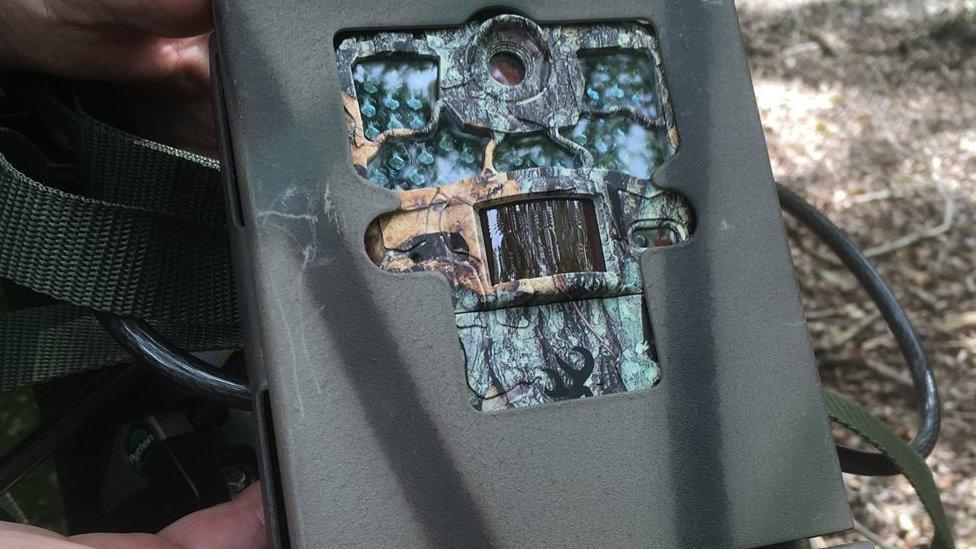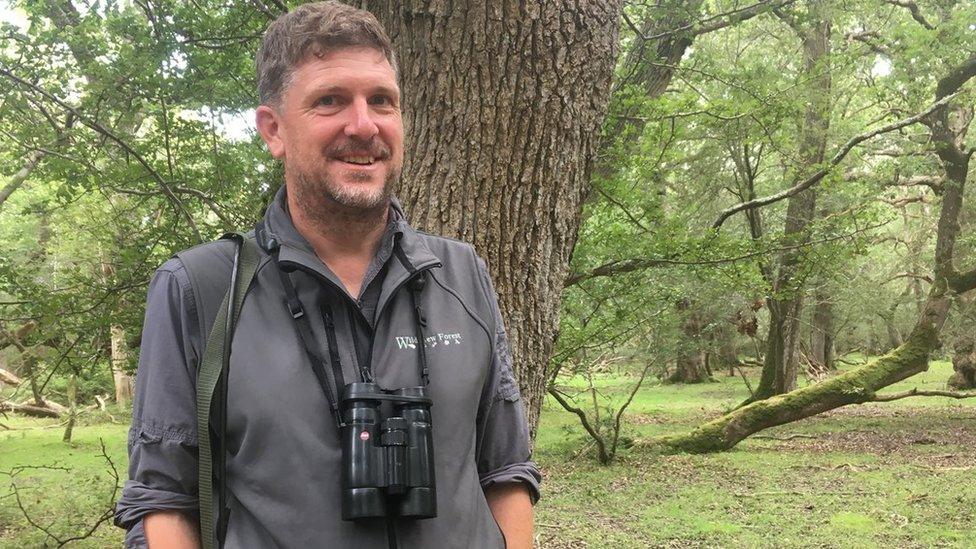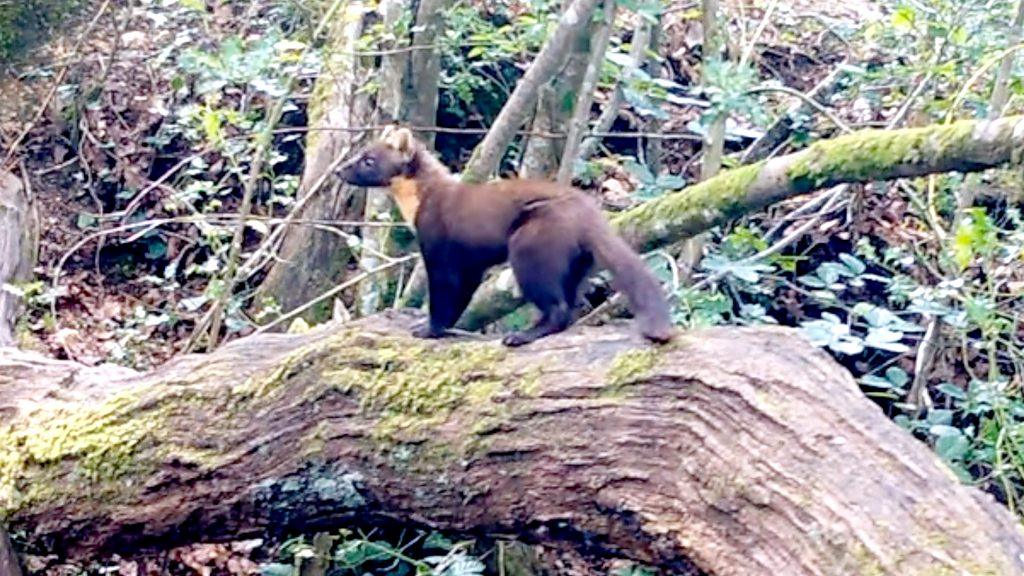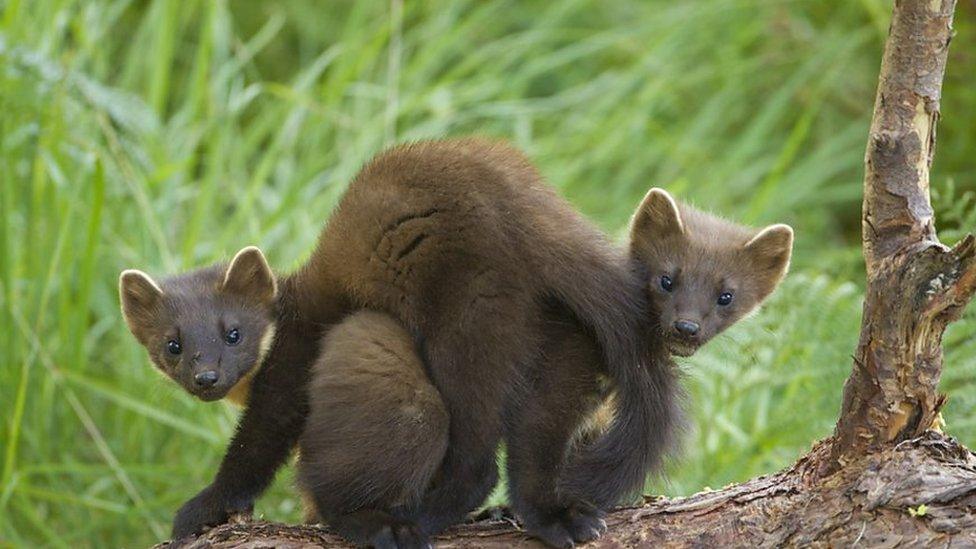Study shows New Forest pine martens successfully breeding
- Published
The creatures sleep and make dens high up in the trees and usually only come out at night to hunt.
Rare pine martens are now believed to be well-established and successfully breeding in the New Forest.
The elusive cat-sized member of the weasel family was previously only thought to have survived largely in the north of England.
As part of a long-term study, hidden cameras showed young pine martens exploring and playing together.
Marcus Ward of the Wild New Forest conservation group said the footage was "incredible".
The study began after several sightings of the protected species in the Hampshire national park, with conservationists aiming to determine if and how pine martens were recolonising the area.

Trail cameras which trigger with movement, were used to video pine marten
More than 100 video clips were captured in 2022, with footage of young pine martens providing further evidence of successful breeding.
The new clips also confirm initial findings that pine martens prefer to use fallen trees and branches to navigate across the forest floor and to cross streams and wet areas.
The creatures sleep and make dens high up in the trees and usually only come out at night to hunt.

Marcus Ward of Wild New Forest has only glimpsed one pine marten
Mr Ward said it was "incredibly rare" to catch a glimpse of a pine marten.
"This video gives us a unique view into their hidden world and an opportunity to really advance the understanding of these special creatures and how best to support them."
The pine marten study is being carried out by Wild New Forest along with Forestry England, The New Forest Study Group, Hampshire and Isle of Wight Wildlife Trust.
Leanne Sargeant, senior ecologist for Forestry England, said: "The survey makes it clear that they are settling in a wide range of areas and successfully breeding.
"We hope that knowing more about their development will help us support these rare creatures and inform reintroduction projects elsewhere."

Pine Marten

A member of the weasel family, pine marten prefer well-wooded areas with plenty of cover and largely feed on small rodents, birds, insects and fruit.
They were all but extinct from England by 1900 due to habitat loss and being hunted for their fur.
Only a small and fragmented population remains mostly in northern England, Scotland and parts of Wales.
Every pine marten is chestnut brown in colour but each has a uniquely shaped bib - a pale yellow section of fur on its chin and throat - which makes it possible to identify and record each individual.

Follow BBC South on Facebook, external, Twitter, external, or Instagram, external. Send your story ideas to south.newsonline@bbc.co.uk, external.
- Published15 August 2021

- Published13 July 2020

- Published29 April 2020
